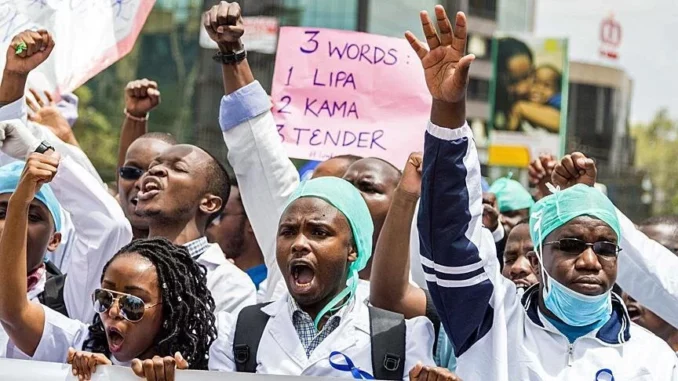
Kihara Level 4 Hospital near Nairobi, Kenya, witnesses a stark scene with most labor ward beds unoccupied amidst a doctor strike stretching for a month. Medical services, including essential procedures like Caesarean sections, are halted due to the absence of medical personnel. Consequently, public hospitals sit eerily quiet, prompting patients to seek care in expensive private facilities or delay treatment, exacerbating chronic illnesses and, tragically, leading to loss of life.
The strike, driven by doctors’ grievances over pay disparities and the failure to employ trainee doctors, underscores systemic issues within Kenya’s healthcare sector. While acknowledging the inconvenience caused, medical professionals argue that demanding better working conditions and resources is essential for sustainable quality healthcare.
President William Ruto urges doctors to return to work and accept the government’s offer, stressing fiscal responsibility. However, ordinary citizens, witnessing firsthand the dire consequences of the strike, express frustration and grief, with some sharing heart-wrenching stories of loss.
Patients like Lucy Bright Mbugua, whose infant requires constant care at Kenyatta National Hospital, endure financial strain and emotional turmoil amid reduced medical staff and limited resources. As clinical officers also join the strike, pressure mounts on the government to address healthcare workers’ grievances and restore normalcy to hospitals.
Despite negotiations and court interventions, a wide gap persists between doctors’ demands and the government’s offers, prolonging the stalemate. Hope lingers for a swift resolution to alleviate the suffering of patients and their families, as religious figures, opposition leaders, and citizens alike call for renewed negotiations and the resumption of hospital operations.
